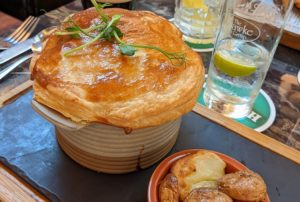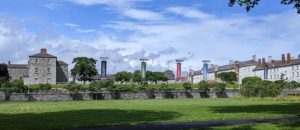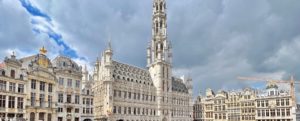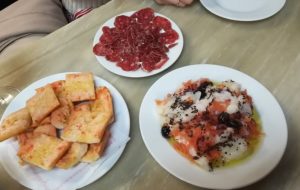The field school that I am working with is first and foremost a placing of learning and development. However, when working alongside the community at Blackfriary it becomes so much more. It is a symbol of the proud heritage, the beautiful history of a small rural town in Co. Meath, the heritage capital of Ireland. Castles like Trim Castle are big and imposing and awe inspiring but they don’t tell the whole story.
The Blackfriary and the Local Community
The Blackfriary is and has always been a benefit to the local community of Trim, even at the most basic levels. Some of the buildings and structures throughout Trim can thank the Blackfriary for standing. In the mid-1700s, when the site was sold as quarry, some of the materials extracted were used in the construction of some of those buildings. The Dominican order were staunch proponents of scholarship and learning, both academic and religious. As such between the learned Dominicans and the presence of the castle Trim was a major player in the medieval landscape, so much so that once upon a time it was considered for the placement of Trinity college; the only other option being Dublin City. Obviously, as Trinity College now stands firmly in Dublin, Trim was not chosen, but to be considered for such an opportunity shows how important Trim was in the overall medieval landscape. How can you not be proud of such a rich, dare I say prestigious, history. The people of Trim are absolutely lovely and humble and proud of their history.
Though the known importance of the Blackfriary has wavered over the years due to the burial of the remaining ruins through natural processes, it is returning. Out of sight, out of mind, local memory preserved that the area of the dig site was important but none of the intricate details were recalled. The field school and this project are returning part of Trim’s history back to the local community. Reinstating the importance of the site to community has reawakened the local conscious.
The remaining archaeology is visible on the far west section of a very large open lot. The community has begun to take back the rest of the site for local use, beginning with the community smart garden located on south east corner of the lot. It is the hope of those who created the project that one day the archaeology is preserved so it may be enjoyed by the community and the rest of the lot used in some fashion that benefits the whole town.
"The field school and this project are returning part of Trim’s history back to the local community. Reinstating the importance of the site to community has reawakened the local conscious."
Kelsey Gamble, U.S.A. Tweet
The Blackfriary and the Archaeological Community
The importance of the Blackfriary does not stop with the local community. As an archaeological sight, the Blackfriary adds evidence of medieval and monastic life to increase the previously understood narrative of Irish monasteries and social dynamics during this period. Insight into medieval burial custom and population data can be observed through studying the burials on site. Technical insight into the creation and destruction of the buildings can be observed in the materials used and left behind, i.e. the different types of stone, the nails, the stain glass, the window lead, etc.
Finally, the material culture of the site also gives insight into the relative importance, or prestige, of the friary. For example the Blackfriary has the largest collection of Purbeck marble, an expensive decorative material imported from England, in all of Ireland.
The Blackfriary and the International Community
Last but not least, the Blackfriary serves as a benefit to the international community as well. The presence of the field school serves to increase the international traffic through Trim town by way of students studying abroad at the field school and tourists visiting the site for its historic value. Though many are already drawn by the castle, the castle by itself can be seen in an afternoon and you can be on your way to the next place. Visitation and tours of the Blackfriary give an incentive for tourists to stay the whole day or even overnight. In this way everything kind of comes full circle as a benefit for the local community. The increase in traffic bolsters the local economy i.e. shops, cafes, pubs, hotels.
– Kelsey Gamble, U.S.A





